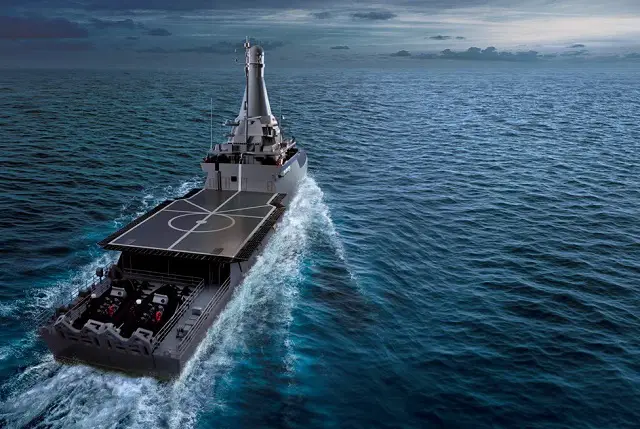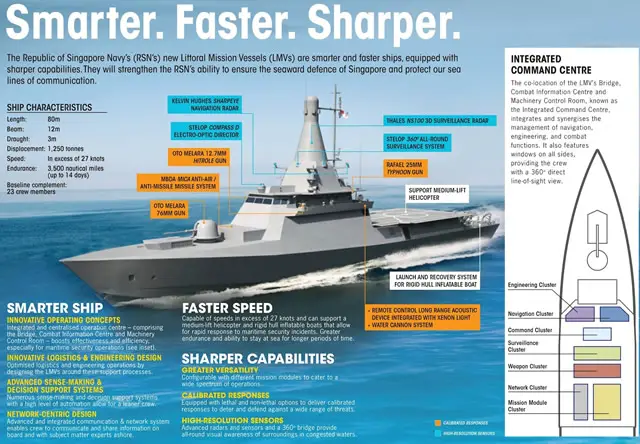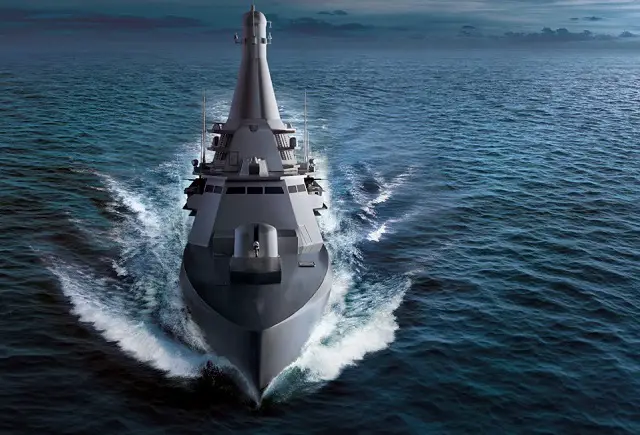Breaking news
Republic of Singapore Navy Future Independence Class Littoral Mission Vessels in Details.
| 2015
 Littoral Mission Vessel. Picture: RSN |
|||
The
names of the RSN's eight LMVs are RSS Independence, RSS Sovereignty, RSS
Unity, RSS Justice, RSS Indomitable, RSS Fortitude, RSS Dauntless, and
RSS Fearless. The eight Littoral Mission Vessels (LMVs) will replace the Navy’s Fearless Class Patrol Vessels. The LMVs will be able to carry out maritime security operations and safeguarding of our sea lines of communication more effectively and efficiently. Although larger in size, the LMVs with the innovative design, will be able to operate with a leaner crew size. Adopting the concept of “mission modularity”, these vessels are highly configurable and can embark on a range of mission modules to meet the specific mission needs. The first LMV will be delivered to the Navy in first quarter of 2016. The LMV sensor suite will include: Thales NS100 3D Surveillance Radar Kelvin Hughes Sharpeye Navivation Radar Stelop Compass D EO Director and 360 degrees all round Surveillance System The LMV weapon systems will include: An Oto Melara 76mm main gun MBDA VL Mica surface to air missiles Oto Melara 12.7mm Hitrole remote weapon stations Rafale 25mm Typhoon remote weapon station |
|||
 Illustration: RSN |
|||
Integrated
Command Center A unique design feature of the LMVs is the co-location of the ship's vital controls in an Integrated Command Centre. This area in the ship houses the LMV's Bridge, Combat Information Centre, and Machinery Control Room - which are usually housed in separate parts of a warship. The LMV also has windows all-round, providing the crew with a 360-degree view of the ship's immediate surroundings - very useful in Singapore's crowded waters, where the LMVs will see most of their service. |
|||



























